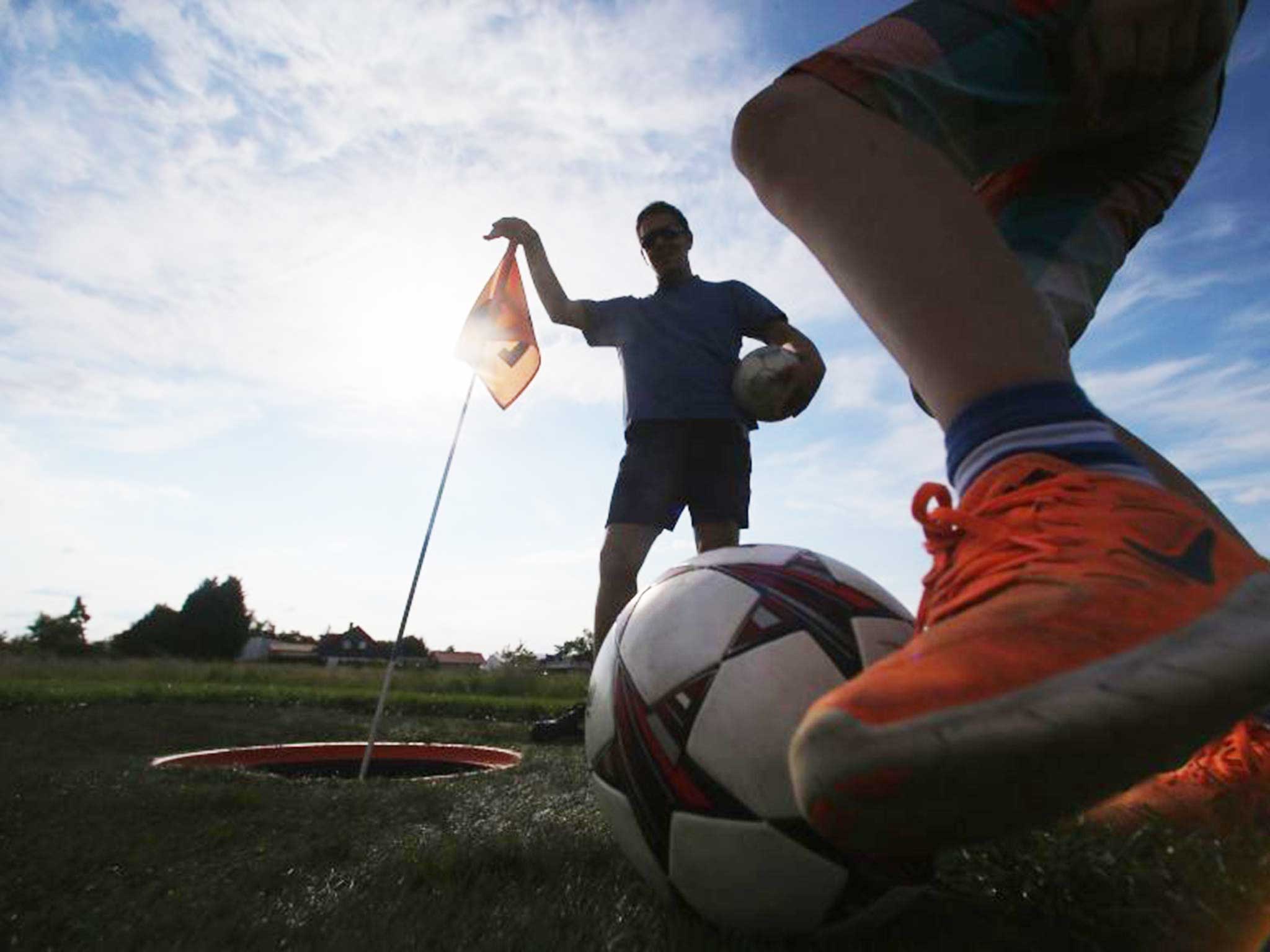A hole new ball game: Introducing the hybrid sport of FootGolf
Not athletic enough for football? Don't like the stuffiness of golf? No wonder FootGolf is taking off in the US, where you just have to kick a large ball into the hole

As neither a skilled footballer nor an enthusiastic golfer, I rarely play either sport by choice. And yet last week I found myself playing both – simultaneously. At the Vista Valencia golf course, just north of Los Angeles, I teed off a round of FootGolf, the new hybrid sport that, organisers claim, is poised to take the US by storm.
FootGolf is exactly as simple as it sounds: it's golf, played not with a golf ball and a heavy set of clubs, but with a football and your foot. The only modifications necessary to existing golf courses are FootGolf holes, which measure a regulation 21 inches in diameter.
The sport's governing body, the Federation for International FootGolf (FIFG), has 25 members, including the UK, but nowhere has FootGolf taken off faster than in the US, where there are almost 200 courses in 37 states, with about 30 in California.
Next month, more than 100 players, from countries including Norway, Hungary and Argentina, are expected to compete in the world's first Pro-Am FootGolf tour at River Ridge in Oxnard, which was the first Californian course to introduce FootGolf. River Ridge general manager Otto Kanny said the course had approximately 1,000 FootGolf rounds played on it in July alone.
FootGolf organisers have been able to capitalise not only on football's rising popularity in the US following the recent World Cup, but also on golf courses' desperation to arrest their own sport's decline. Data from the US National Golf Foundation suggests that more than five million people have quit playing golf in the past 10 years, while potential players under 35 are uninterested in a pastime they consider time-consuming and weighed down with etiquette.
Vista Valencia opened its nine FootGolf holes a month ago and, according to general manager Adam Hill, the new sport already accounts for more than 3 per cent of all the rounds played at the course. "If we can grow our rounds total by 3 per cent [annually], that would be an unbelievable success story," Mr Hill said.
Legend has it that FootGolf was conceived in England by a little-known Spurs winger, Willem Korsten, who, after training during the 1999-2000 season, would challenge fellow players to get their balls back to the changing room with the fewest number of kicks. A decade later, in 2009, Korsten's friend, a Dutch advertising man named Michael Jansen, formalised the rules and organised the first ever FootGolf tournament in the Netherlands.
The sport was introduced to North America by Roberto Balestrini, a veteran of the hospitality industry, who has co-founded leagues in Canada, Mexico, Puerto Rico and the US. The Argentinian-born Mr Balestrini, 51, stumbled across FootGolf on an obscure US cable TV channel, where he saw it being played by Martin Palermo, a former striker for the Buenos Aires side Boca Juniors.
The best FootGolfers combine a golfer's brain with a footballer's toe – but part of FootGolf's appeal, Mr Balestrini said, is that anyone can play: men and women, young and old, talented and talentless. "I can't run around a football pitch for 90 minutes any more," he said. "But even a seven-year-old can kick a ball and walk – and so can a 70-year-old."
FootGolfers must abide by certain aspects of golfing etiquette, such as attire: argyles are encouraged; football studs are verboten. But otherwise players can take it as seriously as they wish. Mr Hill admitted there has been "a little bit of negative feedback" from the golfing old guard about the abnormally large balls sailing across their fairways. "But most people are just curious," he added.
As well as establishing a broad base of amateur FootGolfers, Mr Balestrini has the ambition to create a quality professional league – and he believes he has identified the perfect source of players. "Soccer players retire when they are 30, 35," he said. "What do they do after that? Just picture a FootGolf tournament between former professional soccer players. The niche is huge."
Subscribe to Independent Premium to bookmark this article
Want to bookmark your favourite articles and stories to read or reference later? Start your Independent Premium subscription today.

Join our commenting forum
Join thought-provoking conversations, follow other Independent readers and see their replies